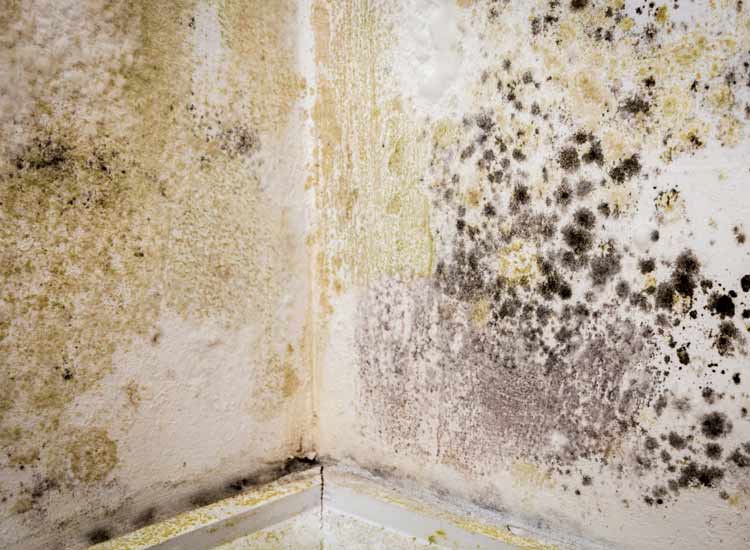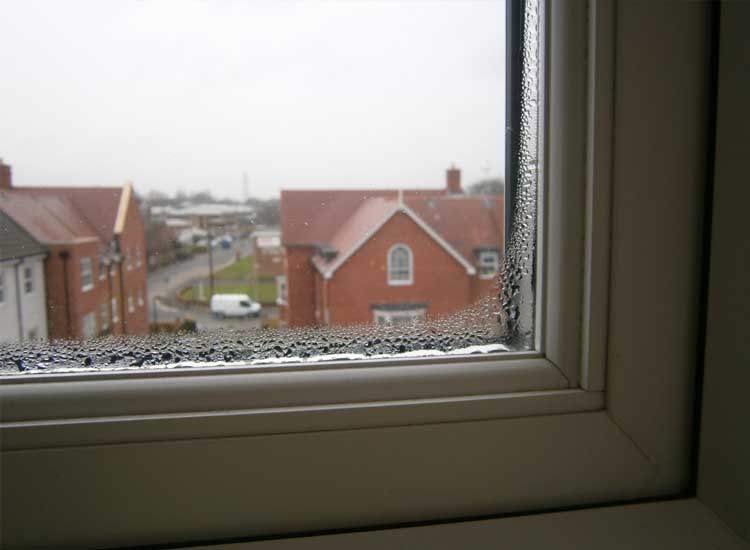Black Mould Removal

Black mould growth can be a common occurrence within poorly ventilated properties that are affected by condensation. If you have concerns that your property has a mould issue, this page will help to provide you with a greater understanding of how to deal with the issue or indeed, prevent condensation forming (the cause of mould growth). This page will highlight the causes of condensation, and the reasons why it forms on cold surfaces. We all know that black mould is unsightly and here are a few tips for black mould removal and prevention.
What Causes Black Mould?
The causes of mould and sometimes mildew are high levels of humidity in the air condensing on cold surfaces. It may surprise you to know that mould growth in properties is a relatively common problem and relatively easy to rectify with the correct black mould removal advice.
Building conditions are usually perfect for mould to develop. The only element which limits the growth rate of the mould is the level of moisture in the atmosphere. Moisture which encourages mould growth is water droplets forming when warm moist air comes into contact with cold internal surfaces. This cold surface is called the dew point which triggers the moisture in the atmosphere to condense on the surface.
Increased humidity levels which turns to condensation is the main cause of mould issues arising within your property. Poor ventilation and high moisture content in the air is why bathrooms and kitchens are the most likely to suffer from mould issues. However, these issues could also be prevalent within other areas of the property.
How to Stop Black Mould?
With enough knowledge, you can implement some of the following steps to help prevent condensation and mould problems presenting themselves in your property.
Effective Heating System & Insulation
Having an effective heating system within your property is vital, particularly in colder climates. Try to maintain a regular temperature within the property over the course of the day and not have periods of high and low temperatures, this also results in you boiler having to work harder to bring the temperature up to the level and therefore increases your heating costs. Insulation within your home is designed to reduce the colder internal surfaces of the external walls and ceilings, thus reducing the areas suitable for the formation of condensation.
Efficient Ventilation
Installing and utilising the correct ventilation, particularly in rooms which need it most. For example, kitchens and bathrooms which are the most likely to suffer from higher levels of condensation. Having efficient ventilation within these rooms will help to remove the moisture from the atmosphere at source and therefore prevent the travel of this moisture laden air throughout the property.

Changing Habits
Making simple adjustments to everyday tasks that you perform daily can help you lessen the likelihood of your property suffering from damp or mould. Changes such as drying clothes outside, putting lids on pans when cooking, and ventilating bathrooms at times of bathing / showering will all assist in the reduction of free moisture in the atmosphere.
Identify Source of damp
Accurately identifying the damp source of your black mould problem, is crucial with regards to eradicating this issue from your property. The damp could have other sources such as penetrating damp in conjunction with the apparent condensation and mould growth. Accurate diagnosis is important as the wrong diagnosis will lead to the wrong remedial action and therefore will not solve the damp and mould problem.
What to Do Next?
If you still believe your property has a mould issue, having tried the above, then you may require professional help. Richardson & Starling’s qualified surveyors can assess and recommend the most suitable black mould removal treatment. The most important element of rectifying a mould issue is an accurate diagnosis of what is causing the excess moisture within your property. Our specialists provide an in-depth survey of your property. This survey will identify the source of the excess moisture and the necessary steps which need to be taken to make your condensation and mould issues a thing of the past.Not sure what is causing damp in your home? Contact your local branch for advice or a property survey to regain your peace of mind.
